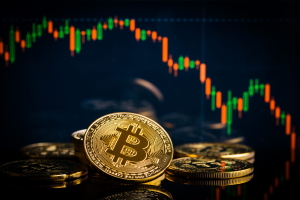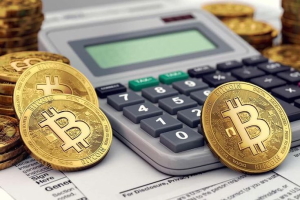The rate of ordinary money is largely determined by the policy of the issuing state, while cryptocurrencies are built on the principles of decentralization. In this regard, there are significantly more factors influencing the rate of cryptocurrencies , and therefore trading cryptocoins is always associated with high risk, which in turn can bring both quick profit and quick loss.
What affects the cryptocurrency rate
It is believed that the GPP indicators of an individual country or the world economy, consumer price indices, actions of Central Banks and other fundamental circumstances do not affect the state of the digital market, but in reality these factors have an indirect impact on the rate of cryptocurrencies. For example, if there is a threat of another crisis caused by political decisions, traders may begin to actively both buy and sell cryptocurrencies, thereby changing their rate.
Pricing in the cryptocurrency market often depends on the statements of large traders or politicians. So, after negative statements made by George Soros, the Minister of Finance of Japan and a number of other famous people, the Bitcoin rate went down sharply.
But despite the above, there are several factors that have a direct impact on the rate of crypto coins:
- Economic;
- Technical;
- Supply and demand.
The group of economic factors includes:
- Frequency (activity) of using cryptocoins in real financial transactions (for example, purchasing goods);
- Issue volume;
- The average number of transactions completed per day.
 One notable feature specific to Bitcoin was identified: the more often the cryptocurrency is bought on the exchange, the more users use the coin when buying real goods, but such a correlation was observed only until the end of 2017.
One notable feature specific to Bitcoin was identified: the more often the cryptocurrency is bought on the exchange, the more users use the coin when buying real goods, but such a correlation was observed only until the end of 2017.
Some experts say that the cryptocurrency exchange rate depends on the following factors:
- Actions of regulators who seek to find ways to control cryptocurrency transactions (including establishing control over servers, introducing bans or restrictions);
- Carrying out forks (dividing the network or making changes) and other technological events that can cause a fall or rise in the exchange rate;
- Problems of cryptocurrency exchanges (hacking, banning activities, etc.);
- A sharp change in the exchange rate of popular cryptocurrencies (in particular, Bitcoin);
- Level of demand from traders.
Providing cryptocurrencies
Collateral can conventionally be understood as property that can be received instead of the acquired asset. For shares, these are real estate, work tools and production capacity of companies, and real money until the 1970s was backed by gold.
But today the situation has changed and the rate of real money is floating, which led to the creation of the Forex currency market, so in the event of global financial crises, many people become many times poorer, as money depreciates. But in reality, national currencies are backed and the ruble exchange rate is partly maintained at its level due to the presence of large mineral reserves in Russia.
Cryptocurrencies do not even have such collateral, since it is a completely digital asset, the rate of which is determined, in fact, by the trust in it from a wide audience. However, developers are trying to eradicate this problem, which will eliminate high volatility, and one of the solutions to this issue was the emergence of stablecoins.
 These currencies are strictly tied to a specific asset, that is, its rate is determined by the price set for another cryptocurrency or fiat money. Stablecoins include Tether (USTD), which is pegged to the US dollar, and today this coin is included in the list of the 50 most popular cryptocurrencies.
These currencies are strictly tied to a specific asset, that is, its rate is determined by the price set for another cryptocurrency or fiat money. Stablecoins include Tether (USTD), which is pegged to the US dollar, and today this coin is included in the list of the 50 most popular cryptocurrencies.
The introduction of stablecoins, despite the described advantages, goes against the principles of blockchain technology (decentralization, distribution and independence from third-party influence) and therefore cryptocurrencies are provided only by:
- The amount of expenses that go into mining crypto coins;
- The size of investments in mining farms;
- The amount of commissions charged for cryptocurrency transactions.
It should be noted that the above security options are typical for cryptocurrencies that can be mined, however, the cost of each digital coin is determined mainly by the level of supply and demand for them.
The difference in the formation of rates of cryptocurrencies and real money
The main differences in the process of forming the cryptocurrency rate include the following:
- Fiat money is a means of payment, while cryptocurrencies are an investment;
- The exchange rate of fiat money is determined and stabilized by the state, and the circulation of national currencies is controlled by the relevant authorities;
- The exchange rate of fiat money is influenced by state policy, its financial situation, management decisions and other similar factors that cryptocurrencies do not depend on;
- Thanks to the decentralization and independence of cryptocurrencies, the influence of market makers on them is minimized.
Pricing is a difficult mechanism to understand, although it is the same for assets and value is determined by three components:
- Costs of creation, production and extraction;
- Market value of the asset;
- The estimated value of the asset.
Is it possible to predict changes in the price of cryptocurrencies?
 When trading short- and medium-term cryptocurrencies, you can use technical analysis tools, as they have long proven their effectiveness. But predicting changes in the price of cryptocurrencies in the long term is more difficult and much depends on the tools that traders and investors use.
When trading short- and medium-term cryptocurrencies, you can use technical analysis tools, as they have long proven their effectiveness. But predicting changes in the price of cryptocurrencies in the long term is more difficult and much depends on the tools that traders and investors use.
Speculative factors play a significant role in the movement of the exchange rate, that is, the price of cryptocurrencies is largely determined by market expectations, and not by the actions of the regulator or government policy. In addition, the movement of the exchange rate directly depends on the nature of the news about cryptocurrencies , and even outright “stuffing” of information can provoke a sharp rise or fall in the price.
Major changes in the Bitcoin to dollar rate
Throughout the almost 10-year history of Bitcoin, its price has risen and fallen sharply quite a few times:
- In 2013, the first rate jump was noted, when the price of Bitcoin rose from $20 to $200 during the spring. This happened due to increased attention to cryptocurrency from the media.
- In April of the same year, the price of the cryptocurrency fell by 71% in just a few hours. The sharp decline in the exchange rate was caused by the arrest of the most popular cryptocurrency exchange at that time.
- By the fall of 2013, Bitcoin again became popular among traders, which is why the price of the cryptocurrency exceeded 1 thousand dollars.
- In December of the same year, a correlation occurred, as a result of which the rate dropped to $500. The latest drop was partly due to the influx of amateur traders, who provoked an increase in the price, and the decision of the Chinese authorities to ban Bitcoin also played a role in the depreciation.
- Until the fall-winter of 2017, the cryptocurrency showed sharp jumps, but it was during this period that the second rise in Bitcoin’s popularity in history occurred, and the price of the cryptocurrency exceeded 19 thousand dollars.
There were many factors that influenced such a rapid rise in prices:
- Recognition of Bitcoin by Japanese authorities;
- Entry of many large hedge funds into the cryptocurrency market;
- Active implementation of ICO;
- Growing investor demand;
- Increasing mining difficulty.
 But already at the beginning of 2018, the situation changed dramatically and a minor correction began, after which major financial market experts spoke negatively about Bitcoin, which, together with other circumstances, led to a sharp drop in the price, which at a certain period dropped below four thousand dollars.
But already at the beginning of 2018, the situation changed dramatically and a minor correction began, after which major financial market experts spoke negatively about Bitcoin, which, together with other circumstances, led to a sharp drop in the price, which at a certain period dropped below four thousand dollars.
Why does the cryptocurrency rate differ on different exchanges?
The price of a cryptocurrency is determined in the relationship between supply and demand, that is, the higher the first indicator, the higher the rate, and vice versa, so the price will rise until all issued orders to buy cryptocurrency are closed. After this, a correction occurs, that is, traders who did not have time to sell the cryptocurrency enter the market and its rate begins to fall until all orders are closed. In this regard, the exchange uses the so-called depth of market, which allows traders to assess the level of supply and demand.
The described nature of rate formation explains why the cost of cryptocurrencies differs on different exchanges. For example, on one site the demand for Bitcoin may be much higher than on another, as a result of which it will cost more on the first one.
Conclusion
The opinions of investors, politicians and economists vary, and some believe that only suppliers of video cards and mining equipment can make money on cryptocurrency, and everything else is nothing more than an ordinary soap “bubble” or financial pyramid. Others argue that cryptocurrencies are the future and such increased volatility is only a temporary phenomenon. Therefore, before investing in cryptocurrency, it is worth understanding why its exchange rate changes and what affects it most, and only then invest real money.
See also:
- Cryptocurrency dynamics
- Cryptocurrency analysis
- Bitcoin is the best investment of the decade
- Live cryptocurrency chart



To leave a comment, you must register or log in to your account.